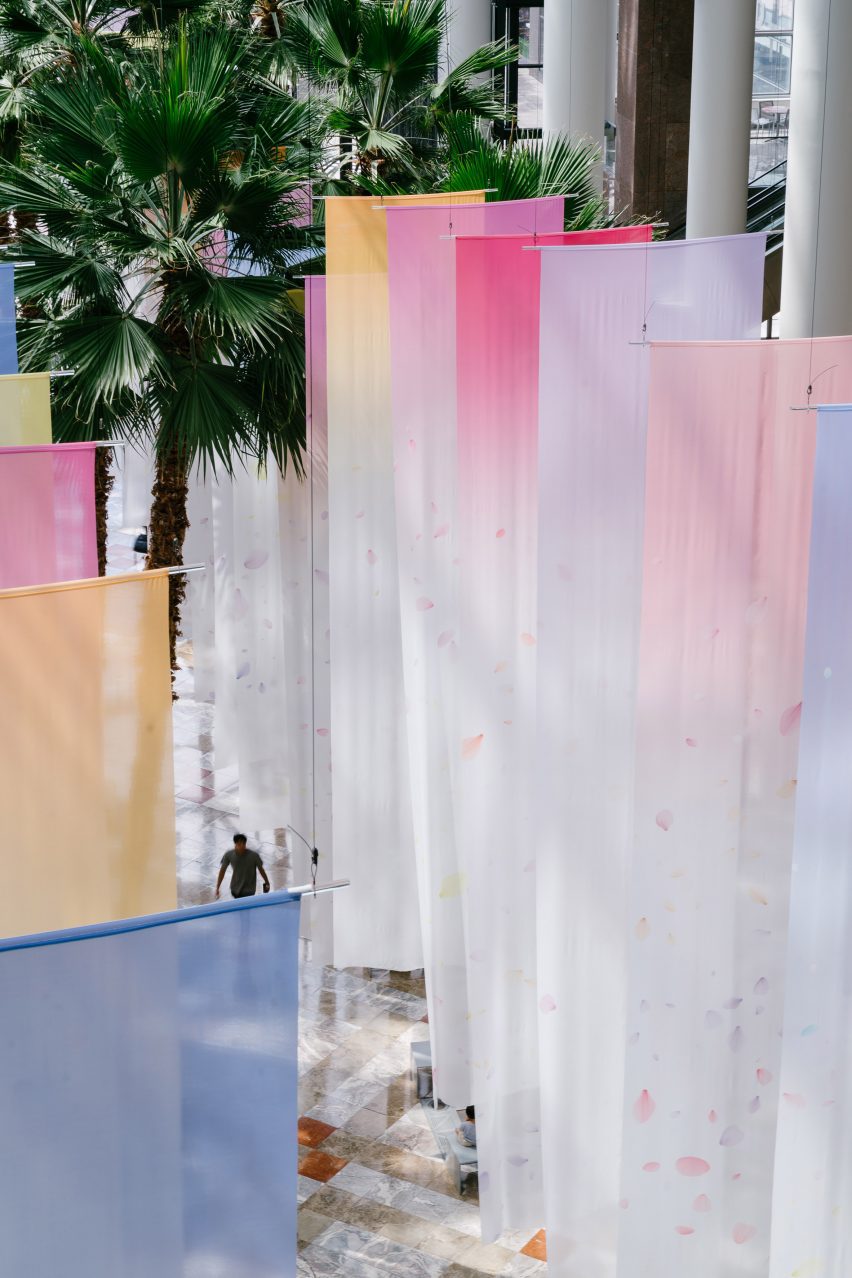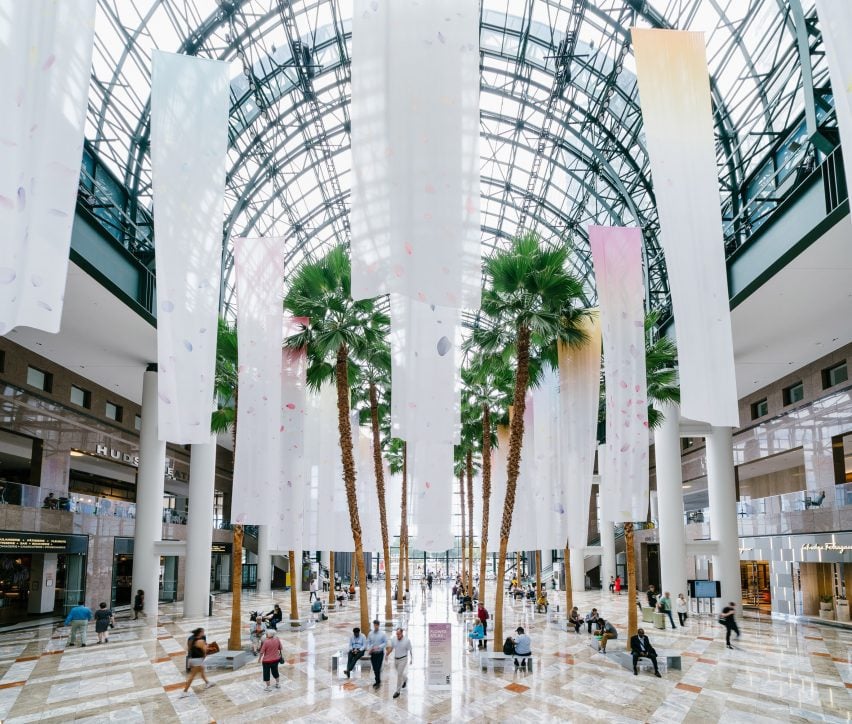Artist Miya Ando has created the Flower Atlas installation in New York City from 72 cloth banners that draw attention to the shift in traditional Japanese seasons created by climate change.
Titled Flower Atlas, the banners hang in New York City’s Brookfield Place mall and depict an ancient Japanese calendar through unique floral motifs.
Each of the large-scale banners represents one of the 72 seasons in the Japanese Kō calendar, which was initially developed in the 7th century.
In contrast to the standard Western calendar, it responds more closely to the natural environment by breaking the 365-day year into seasons of around five days each.
The banners each depict a flower that blooms just one day a year during these “micro seasons”.

“I was interested in creating an environment of walking through a calendar,” said Ando.
“I imagined a skygarden, based on the ancient 24 and 72 seasons calendars wherein coloured petals represented flowers as days and one would be transported into an alternative, nature-based system of time.”

Due to “human impact on climate” the Kō calendar no longer aligns with the seasons of today, explained the artist.
Ando explored this shift by proposing Flower Atlas as an alternative time-keeping record.
“It shows a yearning to have a harmonious relationship to nature,” said Ando.
Suspended within a glass atrium, the banners were made of chiffon printed with ink, micronized silver, gold, mica, oil, or resin and hung on clear acrylic rods.

Measuring 58 x 49 x 182 feet, Flower Atlas spans the length of the Winter Garden in Brookfield Place and is meant to inspire conversation about “art and climate change”.
Other climate-focused artworks include a regenerative arch in Houston, Texas and an installation of 3D-scanned Kenyan caves in a Denmark museum.
The photography is by Fadi Kheir.
Flower Atlas is on display at Brookfield Place until September 14. See Dezeen Events Guide for an up-to-date list of architecture and design events taking place around the world.

